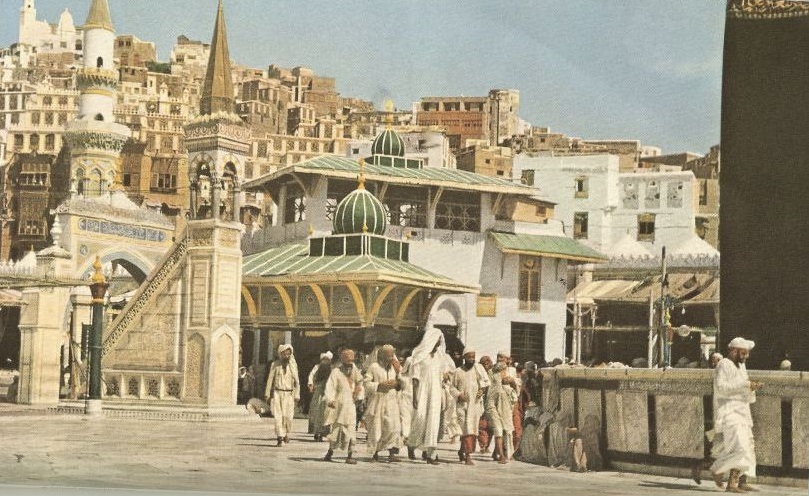Millions of devout Muslims from around the world have just completed the Islamic pilgrimage called Hajj. The Hajj is an annual pilgrimage to Mecca, and it is compulsory for Muslims to do it at least once in their lifetime, once they are physically able and financially capable.

Many Muslims say the Hajj is a life-changing experience, like the civil-rights leader Malcolm X, who said doing the Hajj in March 1964 made him change his views on whites and racism.
In T&T, former chairman of the San Juan/Laventille Regional Corporation, Nafeesa Mohammed believes doing the Hajj has had a major impact on her life. Mohammed performed Hajj, not once but twice—in 2010 and 2012.
Mohammed said when she was growing up, she heard stories about the Hajj from her aunt and other members of the family.
“I really became more aware of the rites of the Hajj when my mother was performing her own Hajj in 1994. Just as she had completed the most sacred rites of the Hajj, my father got a heart attack here in Trinidad and died. We had to bury my father while my mother was in Makkah in Saudi Arabia.”
Another couple, Hajji Shazad and Hajjin Fariza Khan also feel the Hajj has been a transformative life event.
The Khans of Orange Field Road, Carapichaima, performed Hajj in 2010.
Shazad Khan explained that having the intention of performing Hajj is the main factor for Muslims: “Each Muslim is supposed to practice the correct teachings of Islam and with that comes humility and genuine forgiveness in your heart. You must make that intention to perform the Hajj and proceed on the journey by submitting to the will of Allah and constantly declaring that you are there at the service of the Lord.
In terms of special requirements before performing the Hajj, Mohammed explained that there are certain matters that prospective pilgrims would try to fulfill.
“Hajj is compulsory only if you have the means to do it. It’s a once-in-a-lifetime experience and you are not supposed to borrow money to go to perform Hajj,” Shazad said.
“Your personal, family and financial affairs should be organized before leaving for Hajj. Provisions must be made for your dependents prior to departing from your home.”
Mohammed described her first Hajj experience as the most beautiful as she was able to perform the Hajj along with her husband, Reza Abasali.
“I was also able to retrace the movements of my mother at the time of my father’s death as he succumbed during the most intense time of the Hajj rituals. This brought great comfort and peace to me because being near the Kaaba makes me understand much more about life and death and our purpose in this life.”
“Spending more than a week in the City of Madinah was also the most beautiful part of my Hajj experience because I was so close to the tomb of the Prophet Muhammad (PBUH). This is such a sweet smelling and beautiful place. My heart was at peace being so near to our beloved Prophet Muhammad (PBUH),” Mohammed said.
“My whole life has centered around a struggle here in T&T for the preservation of certain aspects of our religious and cultural heritage. I am a traditional moderate Muslim and I was able to witness that the majority of Muslims from around the world are just like us who have no hesitation in showing such abundant love and respect for Prophet Muhammad (PBUH).”
Mohammed said since her first Hajj experience her life has changed dramatically, “I actually started wearing hijab full-time when I made my first downpayment for the Hajj. By that time, my Islamic consciousness was growing by leaps and bounds. I am still the same person but I view life differently.
“We attach ourselves to things that are ephemeral and I am more aware of our real purpose in this life. When we leave this world, it is only our deeds that follow us. So striving to do as much good in this life is my mission. I was brought up by my parents who instilled in us that service to the community is service to God. So this has been an easy path for me.
“I live a normal life but there is much more God consciousness. I am not fanatical or dogmatic at all! My heart and soul have been touched in a profound way since Hajj and I am able to express feelings of love with great ease and comfort.”
While there, Khan said he was able to perform Umrah Hajj on behalf of his children —Fadil, who passed away suddenly earlier this year, daughter Suranah and mother, Imam Baksh-Khan, who is also deceased. This, Khan said is a lesser pilgrimage.
The best part of his experience was on the day of Arafat, “this is where Prophet Muhammad (PBUH) is his last sermon. I prayed all day there, making dua and asking for forgiveness. Being there was like a sea of white, representing purity. The millions of people were all dressed in white. It was a breathtaking scene.”
Shazad Khan’s wife Fariza said her cherished moment was finally viewing the Holy Ka’aba. The Ka’aba is an ancient stone structure that was built and re-built by prophets as a house of worship. The Ka’aba is considered the center of the Muslim world and is a unifying focal point for Islamic worship.
Fariza said, “It was just an awesome and fulfilling experience all around. It really humbles you and makes you closer to God.”
Umrah Packages | Hajj Packages | Ramadan Umrah Packages | December Umrah Packages
Article source www.guardian.co.tt






